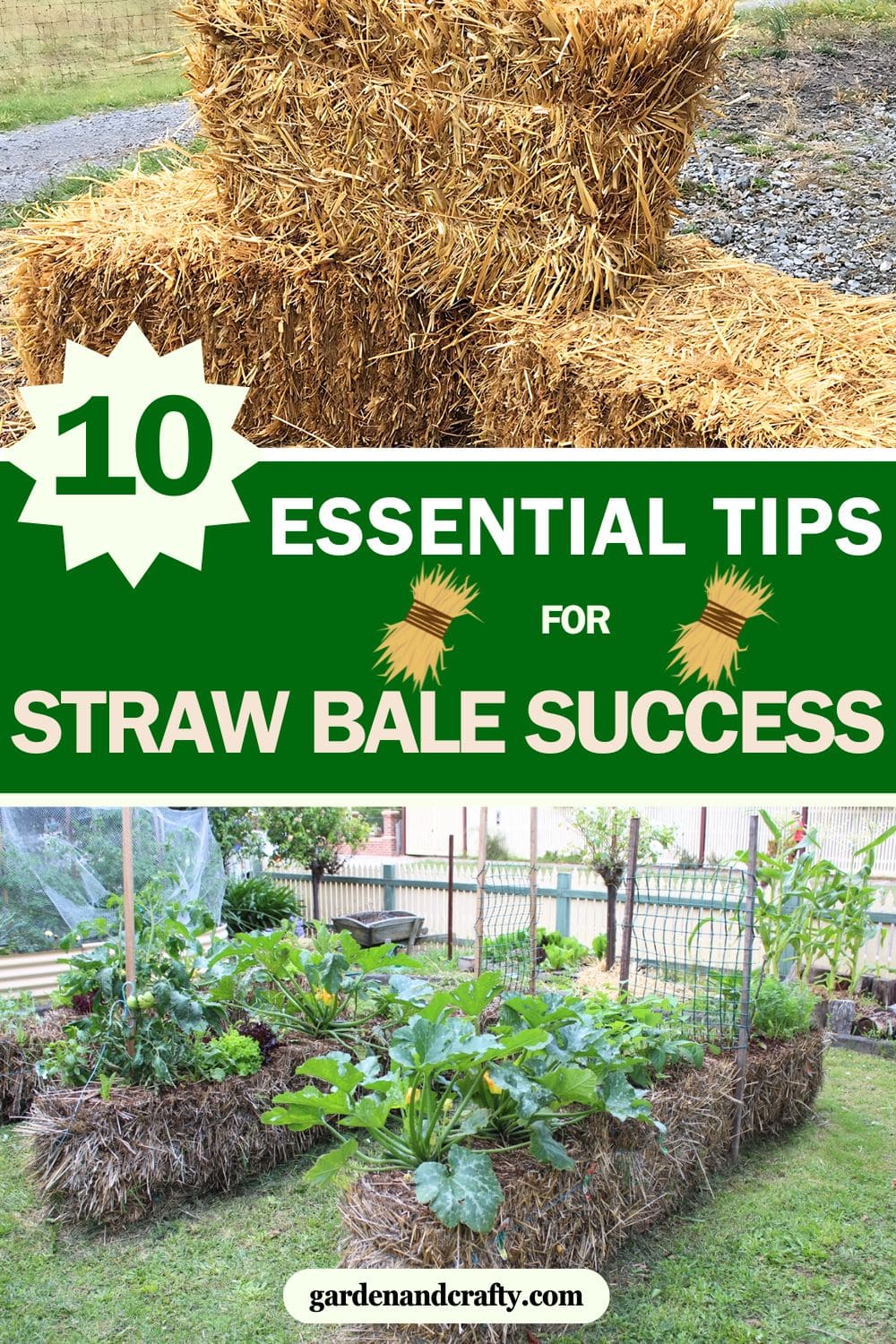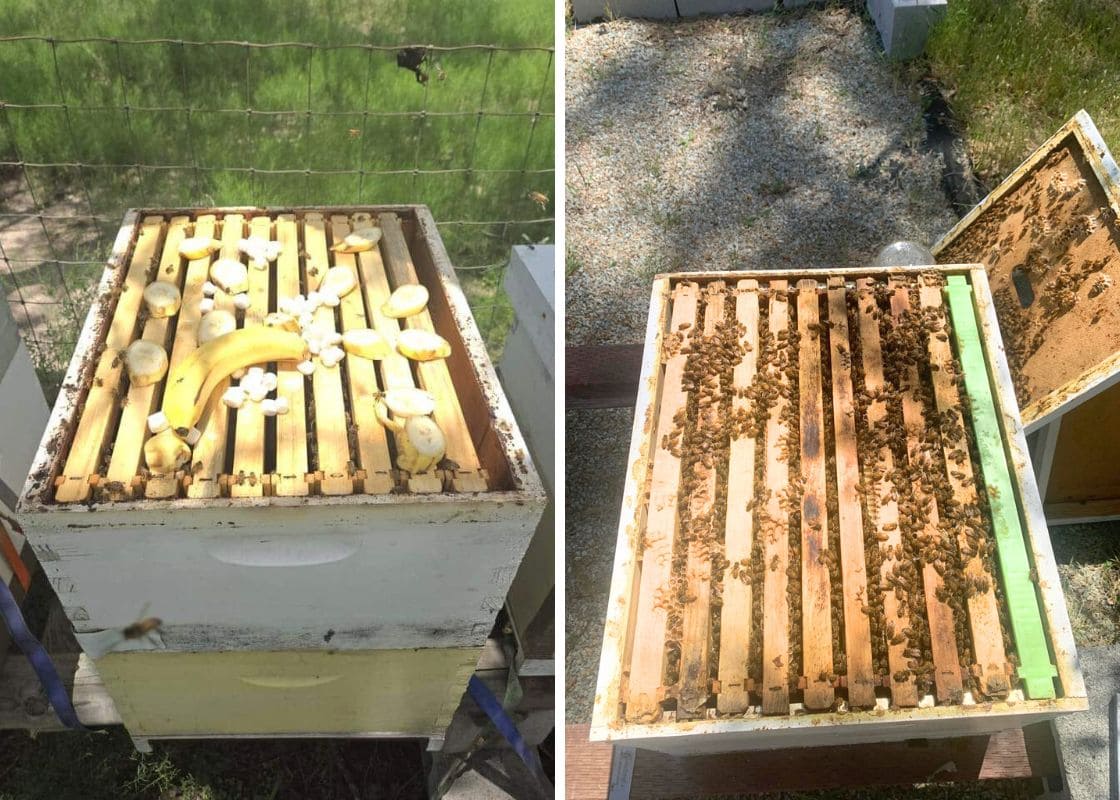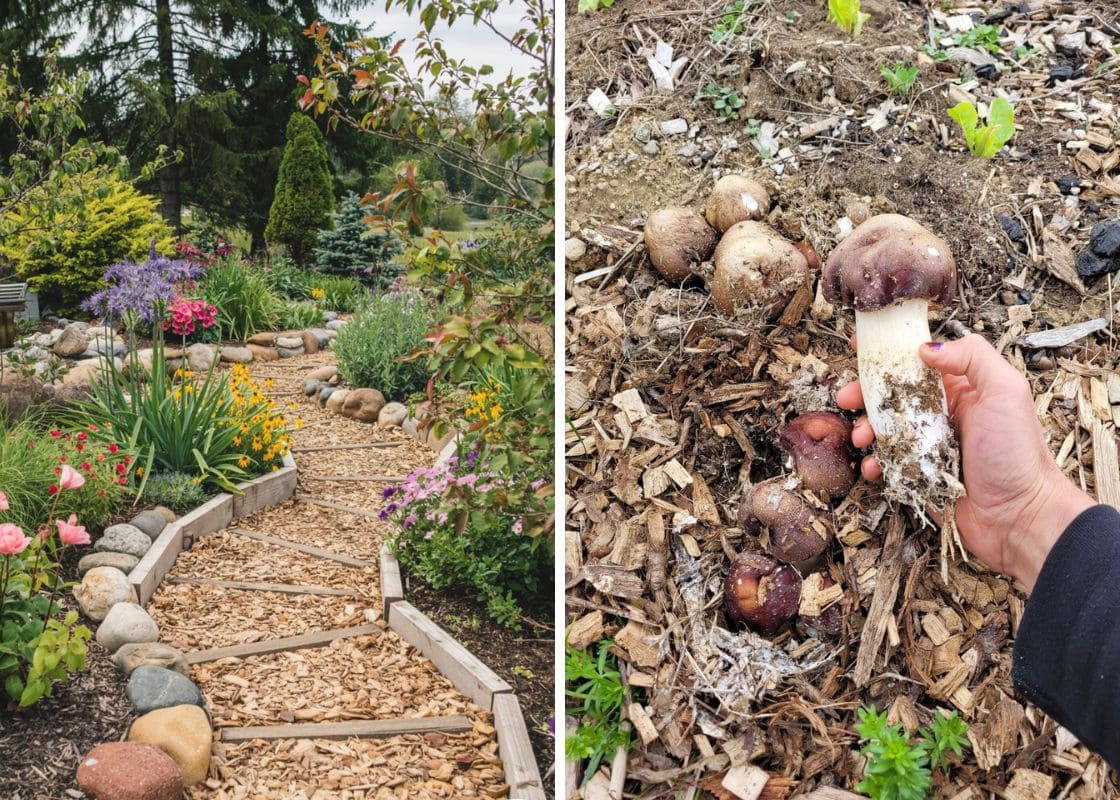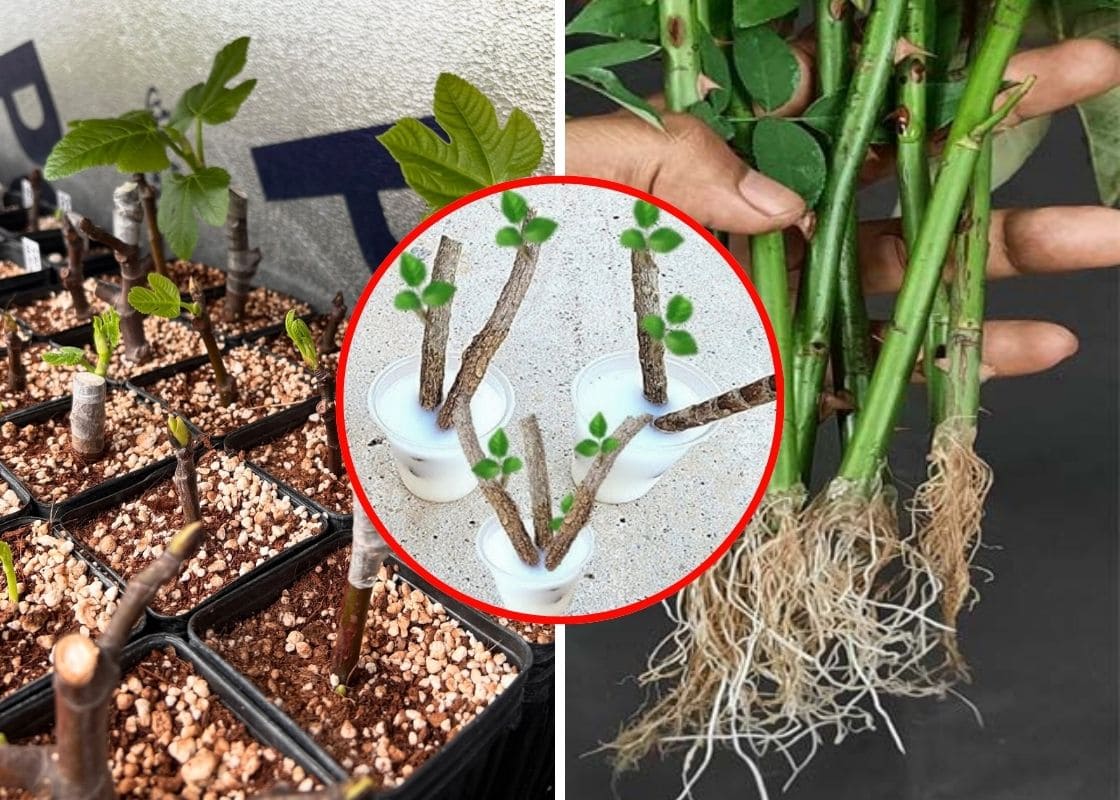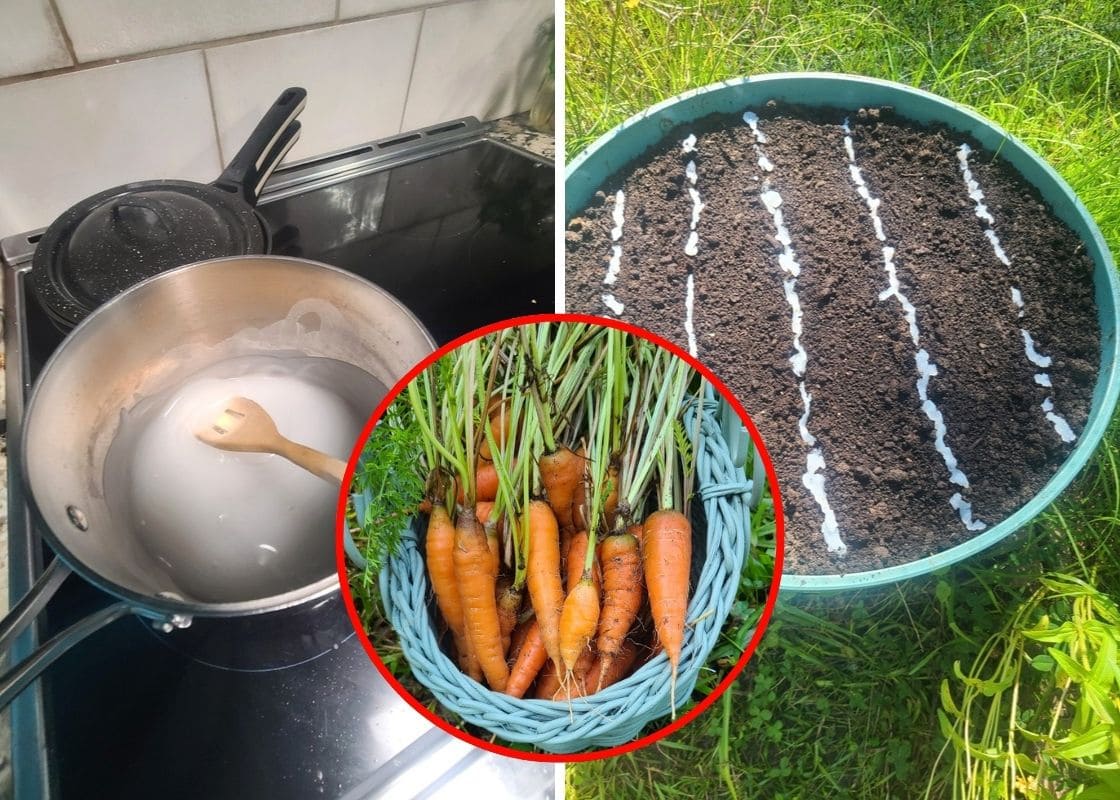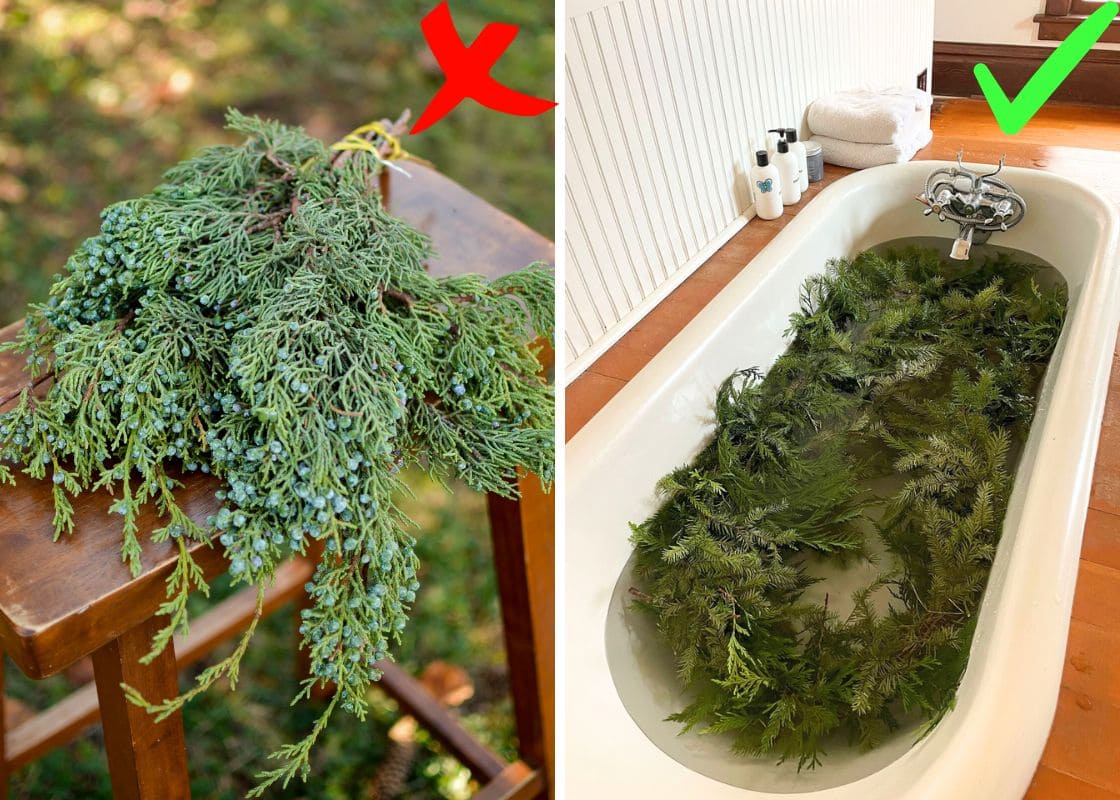Have you ever dreamed of a garden that skips the mess of soil? Straw bale gardening turns this dream into reality.
This innovative, soil-free method transforms ordinary straw bales into fertile planting beds.
It also offers a clean, low-maintenance alternative to traditional gardening.
#1. Choose Quality Bales
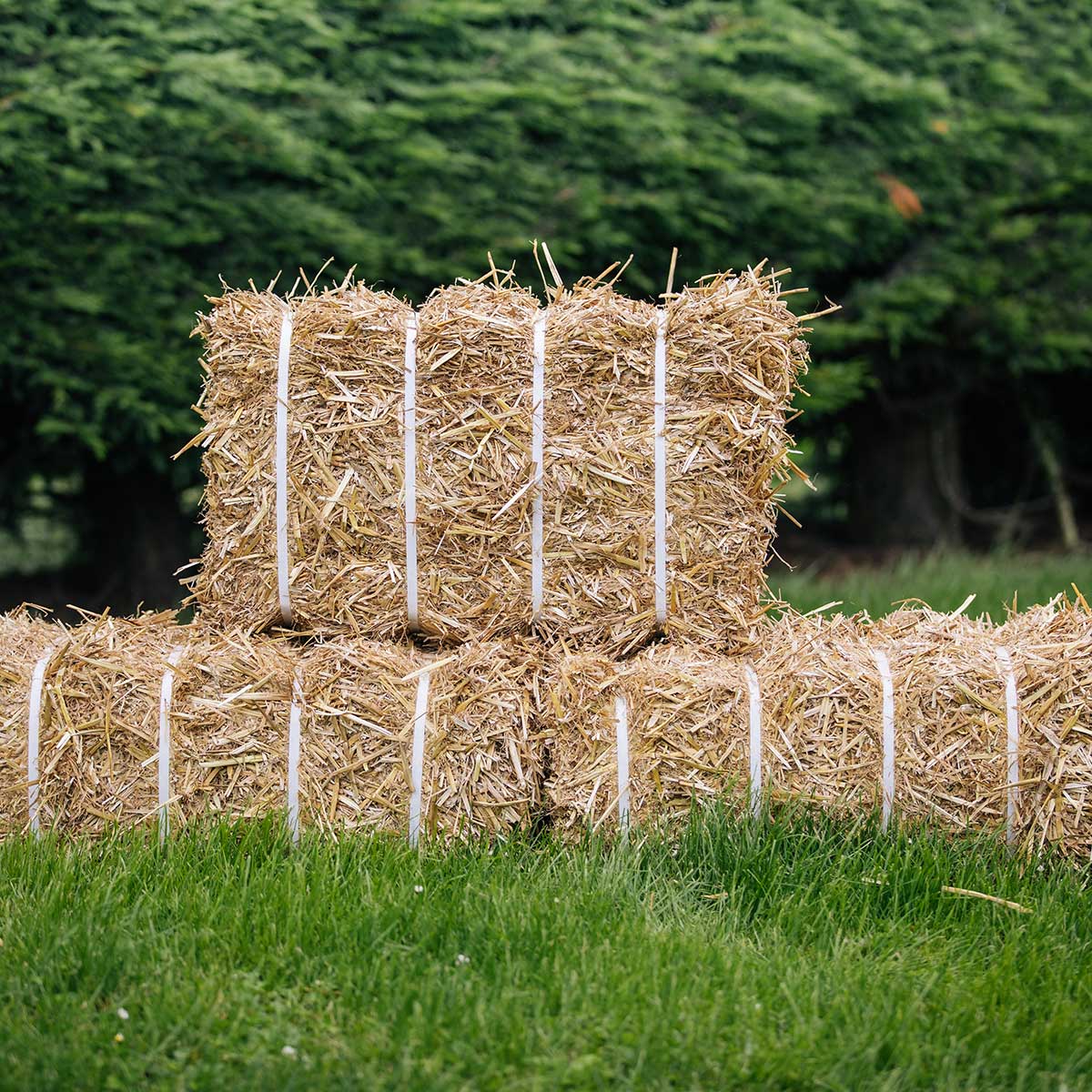
You want to start with herbicide-free bales. This is super important because any leftover chemicals can mess up your plants big time.
So, how do you make sure your bales are clean? Well, you can ask the farmer directly.
If that’s not an option, there’s a nifty trick you can try at home. Plant some bean seeds in the straw.
Beans are super sensitive to herbicides, so if they start looking funky – like yellow or deformed leaves – you know there’s a problem.
#2. Pre-Condition the Bales
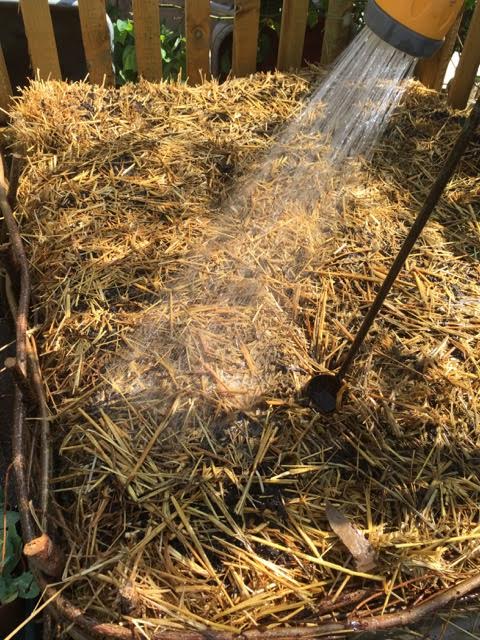
First things first, you need to soak the bales with water. Grab your hose and give them a good drenching for the first three days.
After that, you’ll want to add a nitrogen-rich fertilizer. Urea is a common choice, but if you’re into organic gardening, blood meal works too.
You can actually monitor this by sticking a meat thermometer into the side of the bale.
After about two weeks, the temperature should drop below 100 degrees Fahrenheit, signaling that your bales are ready for planting.
#3. Place in a Sunny Spot
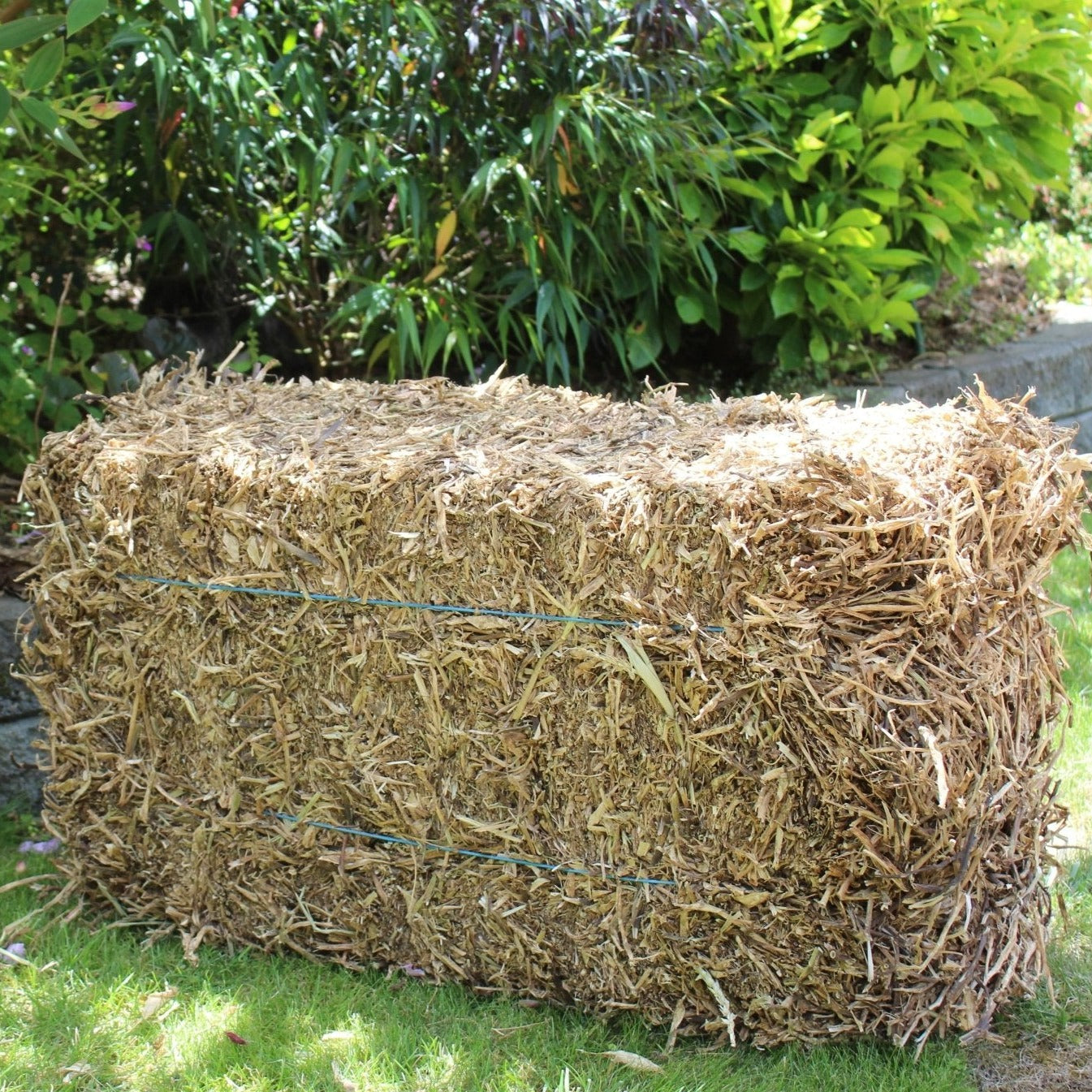
Most plants need a good 6-8 hours of sunlight each day to thrive. So, find a spot in your yard that gets plenty of sun.
Now, place the bales with the narrow side facing up and the twine on the sides.
This setup helps water flow through the hollow straws, keeping everything nice and moist.
#4. Use Proper Drainage
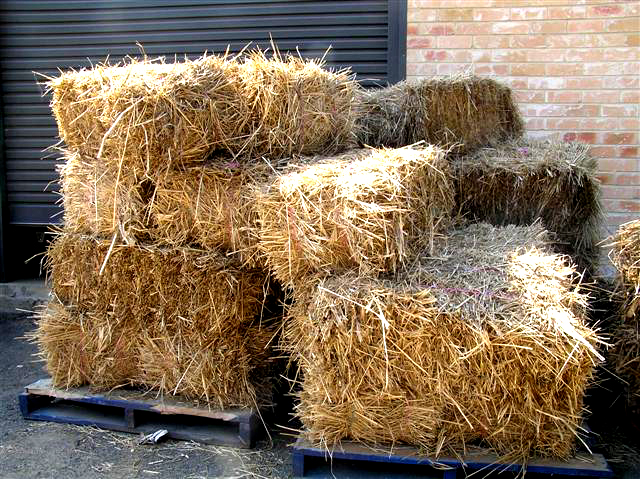
You can use bricks, wooden pallets, or anything that lifts them off the ground a bit to help water flow out instead of pooling at the bottom.
Another trick is to poke some holes in the sides and bottom of the bales.
And don’t forget to check the drainage regularly. If you notice water pooling, it’s time to adjust your setup.
#5. Add a Layer of Compost
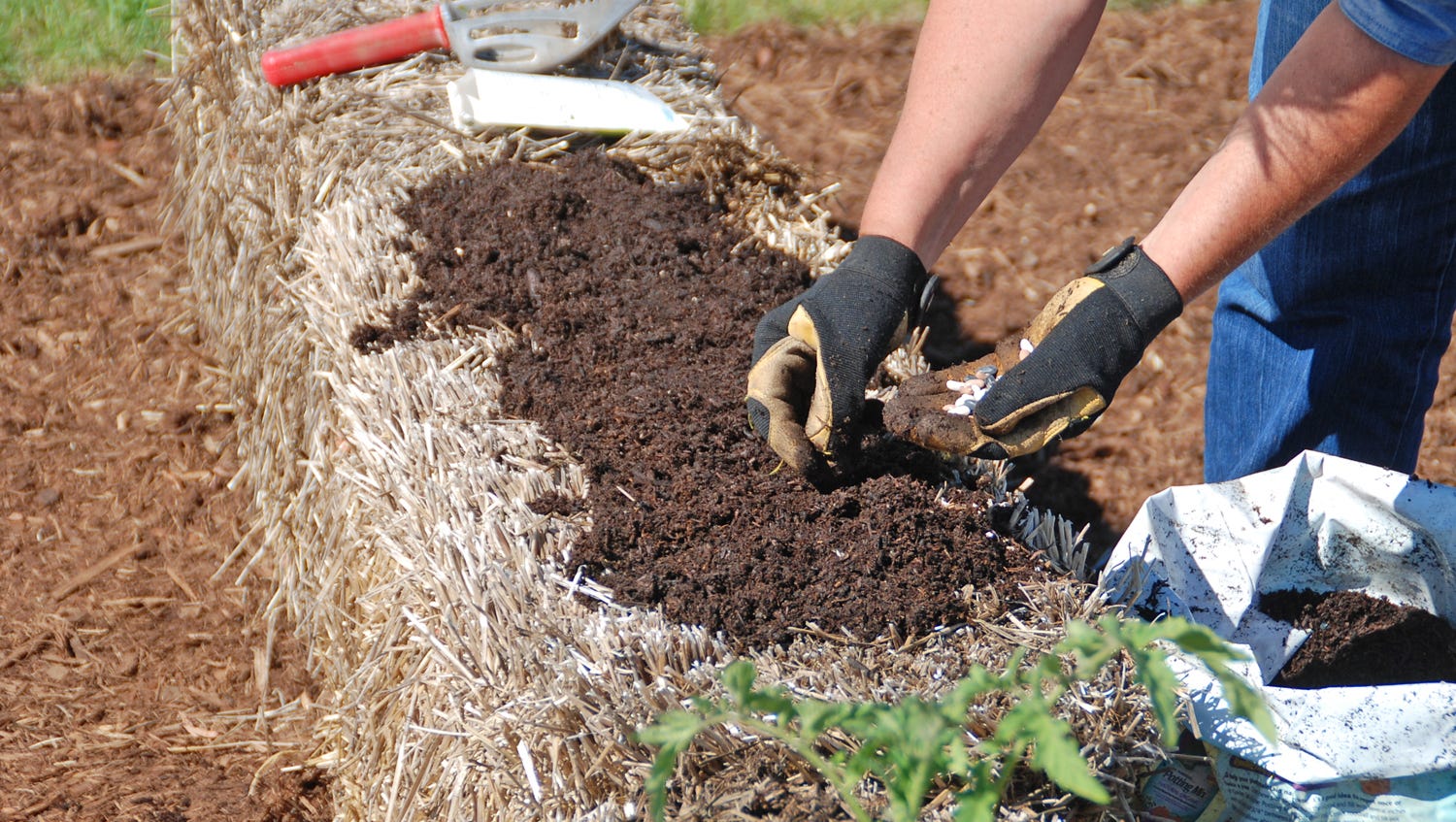
When you add compost, you’re not just feeding your plants; you’re also improving the structure of the straw bales, making them more hospitable for roots to grow.
Plus, compost helps retain moisture, which is super important for keeping your plants happy and hydrated.
A good rule of thumb is to spread a layer that’s about 2-3 inches thick. And don’t worry if you don’t have a compost pile at home; you can easily buy compost from a garden center.
#6. Choose the Right Plants
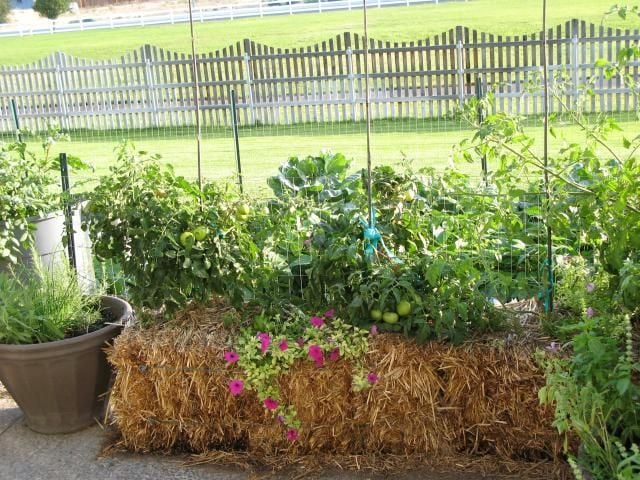
You want to go for plants that are sturdy and don’t need a lot of support. Think tomatoes, peppers, zucchini, and greens.
Remember that melons, pumpkins, and cucumbers can be a bit of a handful.
They tend to spread out and can crowd each other, making it tricky to manage them in the narrow confines of a straw bale.
#7. Water Wisely
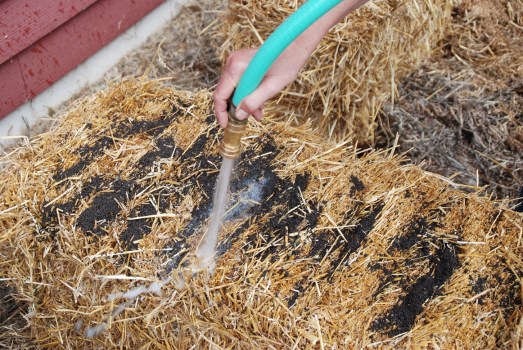
I usually give them a good soak in the morning, which helps the plants stay hydrated throughout the day.
Another thing to remember is that straw bales can act like sponges.
They might look dry on the surface but be soaking wet inside. Stick your finger in a few inches to check the moisture level. If it feels dry, it’s time to water.
#8. Provide Support
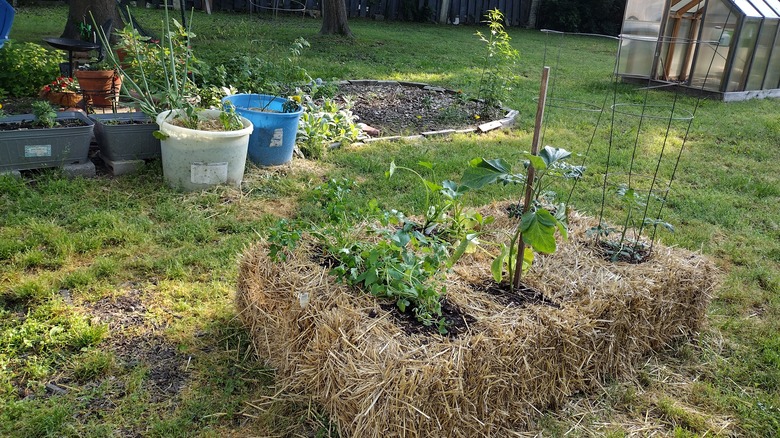
I remember the first time I tried growing tomatoes in straw bales. I thought, “Hey, they’ll be fine!” Boy, was I wrong. My poor tomatoes were all over the place.
You can use a variety of materials for support. Bamboo stakes are a favorite of mine because they’re sturdy and eco-friendly.
You can also use metal cages or even repurpose some old materials you have lying around.
#9. Monitor for Pests

First off, look under leaves, around stems, and in the nooks and crannies where pests love to hide.
If you spot any unwanted guests, you can use natural remedies like neem oil or introduce beneficial insects like ladybugs to keep the bad bugs in check.
Also, keep an eye out for signs of trouble like yellowing leaves, holes, or a sticky residue.
#10. Refresh Annually
Straw bales break down over time, and by the end of the growing season, they can become pretty decomposed.
This decomposition is actually great for your garden soil, but it means the bales won’t be as effective for planting next year.
At the end of each growing season, take the old bales and spread the decomposed straw over your garden beds. Then, get yourself some fresh bales for the new season.
